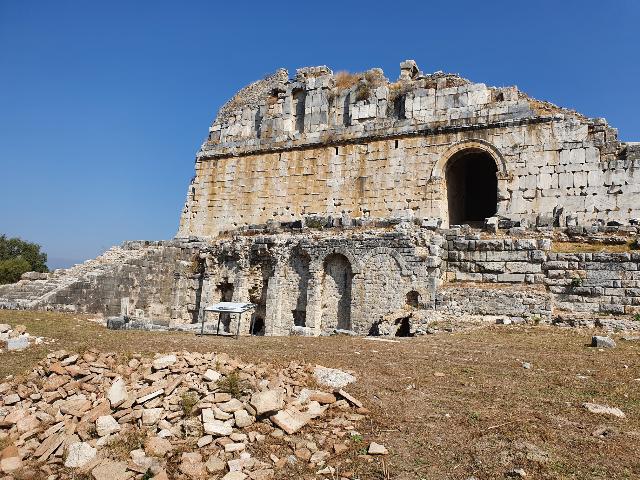Due to the interest generated by last week’s article about the Miletus Cave I feel obliged to expand a little further on the artefacts which were found within the dark and sinister depths of its chambers, and a particular dark page of history writes Glenn Maffia.
Where are the artefacts?
I conducted my own ‘digging’ online in the comfort of my own home, and managed to unearth the abstract (that is a pre-amble before the bulk of the text) of an article by Philipp Niewöhner, published by the German Archaeological Institute in 2017.
He goes into a brief summary of the artefacts that he recovered from the cave. Obviously, they have been removed, though, I have not noticed them on display at the Miletus Museum as I would have thought.
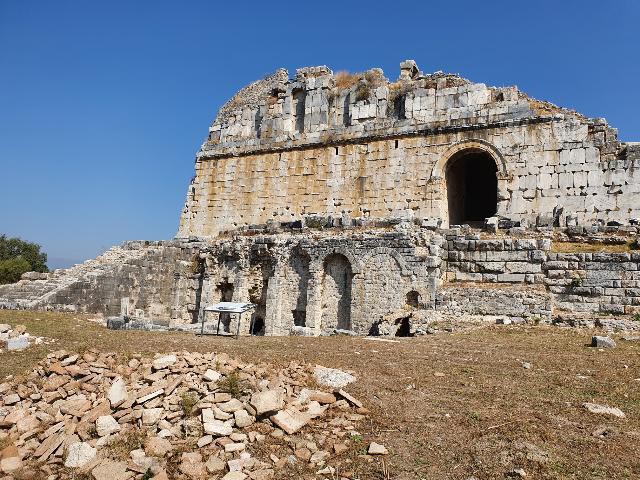
The cave’s position at Miletus
It is possible, as these finds were made over a period of four years, they could still conceivably be under investigation either in the Museum itself or at the German Excavation House located in the nearby village of Akköy.
Chronology and votives
The artefacts are quite sparse considering this place was once a revered holy place, though that sparseness, in itself reveals a notable historic story.
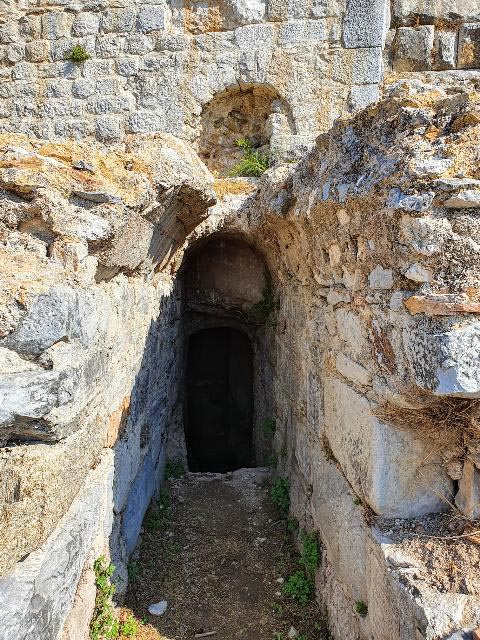
Entrance of the cave
The cave sanctuary, containing the sacred spring, appears to have been developed during the two prominent building phases of the theatre during the Hellenistic Period initially, and then later the Roman theatre we see today which was constructed by Emperor Trajan (98 CE -117 CE).
Though some research indicates that work during the reign of Emperor Nero (54 CE – 68 CE) may have occurred also.
The finds in the cave sanctuary consisted of those gruesomely amputated fingers, I mentioned last week, and a mix of terracotta figurines both of which could be construed as votive offerings (to the god of medicine and healing, Asclepius?).
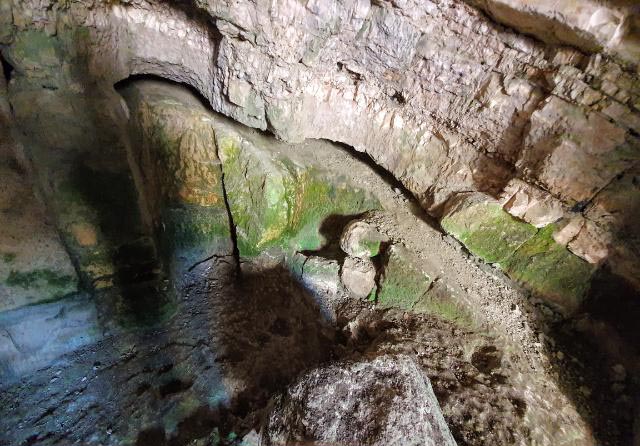
Potential source of the spring
Investigating within the spring itself disclosed 44 late antique oil lamps, which may have also been votive donations.
A dark history of fanaticism
The pagan age began to ebb away with the advent of the ever burgeoning Christian religious belief. I can perceive the attraction to these Romanised populations, namely the pagan religion held a multitude of gods; gods of crossroads, gods of the hearth, of doors, of secluded groves, any number of gods for just about everything.
It must have been confusing and worrying least one forgets a god in a ‘slip of the mind moment’. This new-fangled Christian religion had just the one god, how much more convenient.
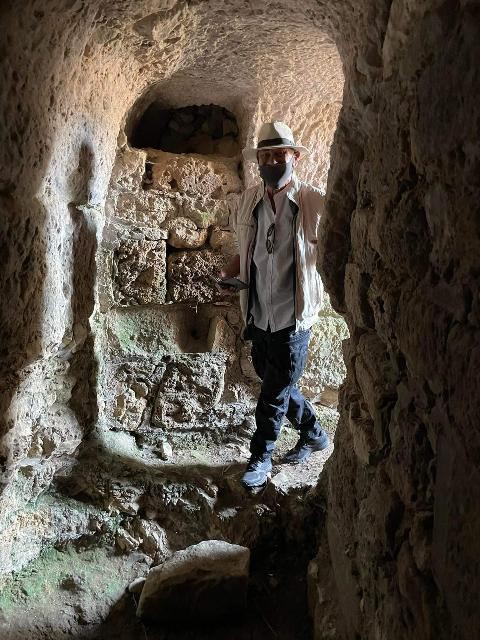
Our intrepid explorer, Glenn Maffia
It wasn’t until the reign of Emperor Theodosios I (379 – 395) that the persecutions of non-Christians started in deadly earnest. It was at this precise time, at the turn of the fifth century, that the sacred spring was blocked, filled with the aforementioned oil lamps and an infill which included some marble heads which once decorated the theatre’s stage building.
These sculptures had been previously defaced, presumably by Christians to vandalize their elegance and beauty. Therefore, those that continued to hold this place sacred could have plausibly closed the spring with the lamps and the marbles to protect this once holy site and the votive offerings from further desecration whilst conforming to the anti-pagan edicts issued by Theodosios.
I am sure that you are more than aware that religious fanaticism is not consigned merely to our present, but also occurred with equal intolerance throughout the time of Humankind upon this small blue dot of a planet.
